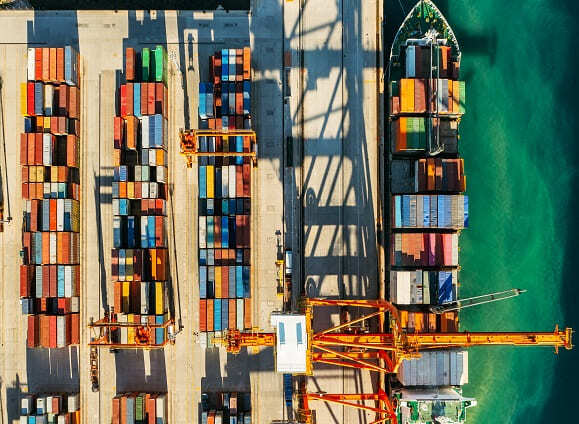
 Data Structure
Data Structure Networking
Networking RDBMS
RDBMS Operating System
Operating System Java
Java MS Excel
MS Excel iOS
iOS HTML
HTML CSS
CSS Android
Android Python
Python C Programming
C Programming C++
C++ C#
C# MongoDB
MongoDB MySQL
MySQL Javascript
Javascript PHP
PHPPhysics
Chemistry
Biology
Mathematics
English
Economics
Psychology
Social Studies
Fashion Studies
Legal Studies
- Selected Reading
- UPSC IAS Exams Notes
- Developer's Best Practices
- Questions and Answers
- Effective Resume Writing
- HR Interview Questions
- Computer Glossary
- Who is Who
What is the full form of FTA?
Introduction
Free Trade Area (FTA) is a particular geographical region where a number of countries agree in order to get away or significantly decrease taxes, quotas, and other trade constraints on goods and services that are transferred between countries.

An FTA's primary objectives are to increase financial integration among the countries that are involved and improve trade between countries.
Characteristics of FTA
A Free Trade Area (FTA) should include the following important Characteristics −
Elimination or decrease of tariffs − Members of an FTA agree to do away with or reduce responsibilities on items sold between themselves, facilitating trade and bringing down import prices.
Reduced non-tariff trade obstacles − To encourage the free flow of products and services, an FTA also strives to lower non-tariff trade barriers including quotas, licensing requirements, and technical rules.
Flexibility − Members of an FTA maintain their own trade policy toward non-member nations, unlike a customs union or a single market.
Preferential treatment − Members of an FTA are given preferential treatment over non-member countries, which can increase exports and bring in foreign investment.
Rules of origin − FTAs frequently include rules of origin which specify the amount that a product must be made in the FTA area in order to be eligible for the benefit of special treatment.
Cooperation − To encourage equitable and sustainable economic growth, members of an FTA frequently work together on topics including intellectual property rights, labor regulations, and the preservation of the environment.
Advantages of FTA
Some of the primary Advantages of a Free Trade Area (FTA) include the following −
Trade promotion − FTAs encourage trade among the participating countries by removing or minimizing tariffs and other trade obstacles, which increases trade in goods, imports, and economic growth.
Lower costs for customers − By removing tariffs and other trade restrictions, FTAs can assist in lowering the cost of goods for consumers.
Higher competitiveness − FTAs may assist member nations' firms become stronger competitors by giving them opportunities in bigger markets, which encourages higher innovation and efficiency.
Attracting international investment − By providing a secure and predictable economic environment as well as access to a bigger market, FTAs can make countries participating more attractive to foreign investors.
Job creation − Increased trade and investment as a result of FTAs can result in job creation and higher pay, especially for export-oriented industries.
Increased cooperation − FTAs can encourage member nations to work together more closely on issues like intellectual property, labor laws, and environmental protection, which will increase economic growth's sustainability and inclusiveness.
Disadvantages of FTA
Some of the primary Disadvantages of a Free Trade Area (FTA) include the following −
Job losses − While FTAs can result in the development of new jobs in sectors that are export-oriented, they can also cause job losses in sectors that are more exposed to import competition.

Unequal distribution of advantages − FTAs may favour some sectors and areas over others, which results in an unjust distribution of benefits.
Dependence on other members − FTAs can render countries dependent on one another for trade, which may be problematic if other members are engaged in political or economic issues.
Increased trade deficit − An FTA may cause one or more member nations to see an increase in their trade imbalance, which might be harmful to their economies if imports grow more quickly than exports.
Lower standards − As participating countries try to bring in foreign investment, FTAs may cause a race to the bottom in terms of labor and environmental standards.
Loss of sovereignty − Some contend that FTAs might reduce a country's capacity to enact its own trade laws and regulations, thus undermining the country's independence.
Conclusion
In conclusion, a Free Trade Area (FTA) is a specified geographic area where a group of countries decide to do away with or bring down trade restrictions on the exchange of goods and services. Increased trade, lower consumer prices, increased competitiveness, the attraction of foreign investment, the creation of jobs, and improved cooperation are all benefits of FTAs. FTAs do, however, come with disadvantages, such as the loss of jobs, unequal benefit distribution, reliance on other members, increased trade imbalance, lowered standards, and loss of sovereignty.
FAQs
Q1. What does an FTA work as?
Ans: An FTA's primary objectives are to enhance economic integration among its member nations and improve trade between countries.
Q2. How does FTA different from other trade agreements?
Ans: In terms of flexibility, FTAs are different from previous trade agreements including customs unions and common markets since member countries are still free to go after their own trade policies with other countries.
Q3. What distinguishes a common market from an FTA?
Ans: While a common market allows the free movement of goods, services, capital, and labor among member countries, an FTA eliminates or reduces tariffs and other trade barriers between member countries.

